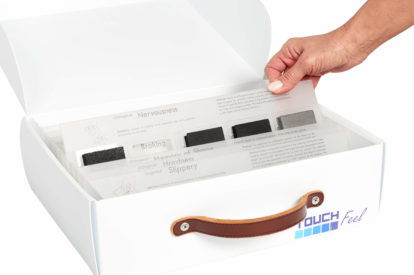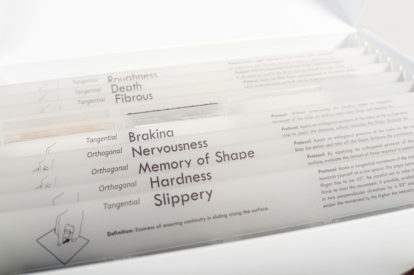Haptic fingerprint - what is it?
Would you like more information?
We are happy to help you!
Within product development and planning, the so-called haptic fingerprint plays a supporting role. But what is it about …in the first place?
Based on the assumption that our sense of touch, i.e. haptics, plays a decisive role of the purchase decision, our research has already been influenced for many years to create an objectifiable haptic fingerprint that can be measurable. This technical development introduced us to some challenges. Here we would like to try to structure and comprehensible our steps to an extremely satisfying result.
Since every surface can feel different for every person, it is it is necessary to use the same measurement parameters for all surfaces. If two materials, which we compare with each other, feel strongly different, such as aluminum, which feels very cold, and plastic, which feels comparatively very warm, then the interpersonal Match very high, close to 100%. If the differences are not so great, there are often people who judge differently in comparison. This can be influenced by the form of the day, the time of day, gender, etc.
To represent a multidimensional haptic fingerprint, different descriptors were defined. These are:
- Macro-roughness
- Micro-roughness
- Contact temperature
- Hardness / Softness
- Stick-Slip
- Slipperiness
On the basis of these indicators, we are able to identify the most varied materials and provide objective results. First, we defined the physical parameters of a surface.
Here you find a practical application of four different material combinations and the different haptic fingerprints.






